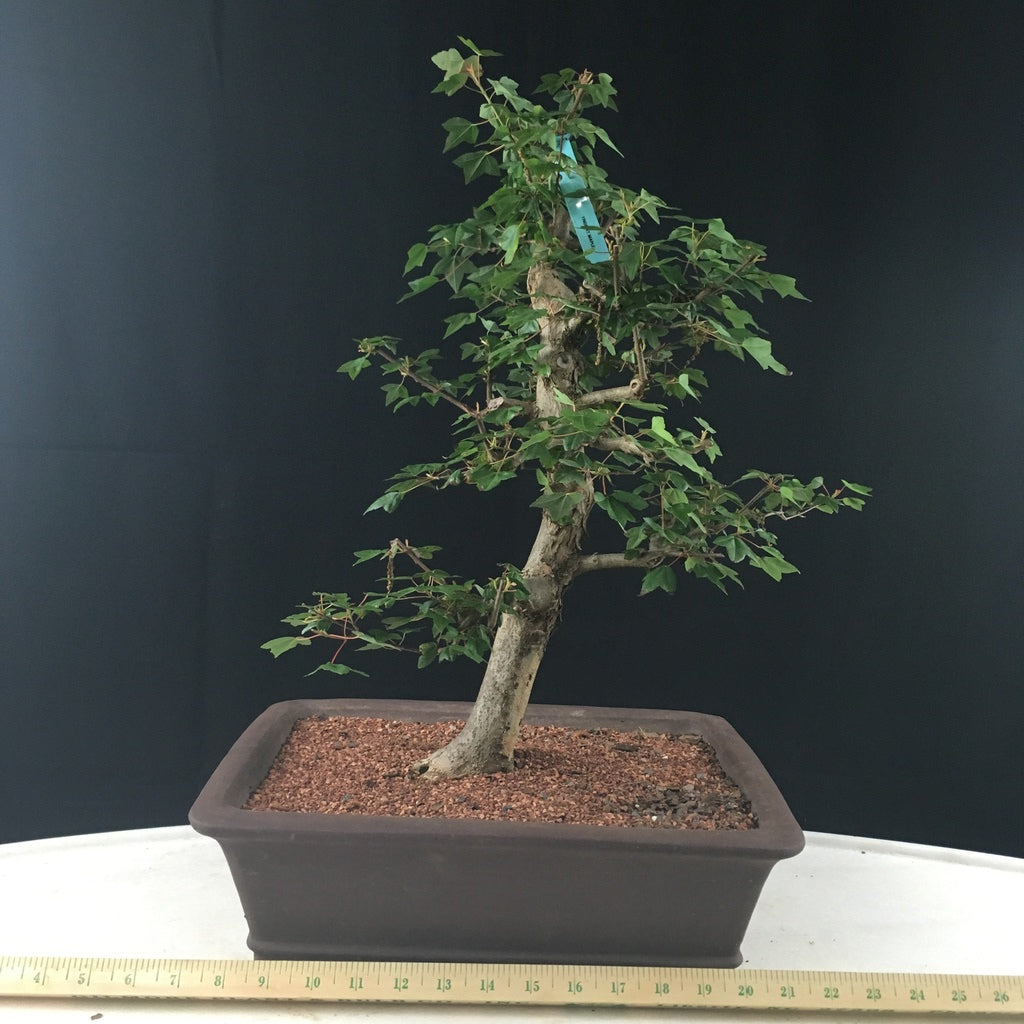Trident Maple Bonsai Care -Acer buergerianum
How to Care for Trident Maple Bonsai
Trident Maple Bonsai are one of the most popular and easiest trees to grow and care for. They're fast growing when placed in full sun and have no serious pest or disease problems. If the new spring growth dies back your tree may have Verticillium wilt or Anthracnose. Prune back to a node below the infected area. While responding well to water and fertilizer, Trident Maples will become more drought resistant with age and require less fertilizer. Pale, weak, yellowing leaves are secondary to excess substrate water. High nitrogen during both the spring and fall growth spurts hastens trunk development. As with all maples, the root system thrives in a cool, moist substrate high in organic matter. Defoliation is terrible horticulture due to the excessive unnecessary stresses to any healthy plant. Use directional pruning, bud selection and possible deadwood features. Plan one leaving at least one branch unpruned during the developmental pruning stage to minimize internal length on that same branch closer to the trunk. After one growing season remove that particular escape branch to minimize branch thickness. Don't hesitate to remove any particular too-thick branch back to the trunk. They are fast growing so heavy callus tissue and backbudding is produced after heavy pruning especially if starting from an overgrown garden plant.
Start with seedlings or nursery stock less than 1" caliper because thick trunks may signify the roots are too thick. Seedlings are variable both in overall growth habit and leaf shape. Plant directly in the field in full sun for a few years to quickly develop a thick buttress, trunk taper and callused-over scars. Periodic major root pruning is required if field grown. Several flushes of growth each growing season can be sheared back, each time leaving ramification and shorter internodes. Selectively cull out thick vigorous top branches or prune back above the first node. Thin other congested nodes. The preferred shape may be lost without systematic branch pruning. Repot to a deep training pot when the trunk gets to about 2" cal. to thicken up the roots. Shave off bottom half root mass when transplanting or repotting to a deep training pot.
- Broadly columnar to spherical with ascending branches at maturity.
- Flat foliage pads or "clouds" are never seen in nature on a deciduous tree.
- Dense, green foliage.
- Late to color in fall and late to drop leaves.
- Exfoliating bark.
- Best as a specimen or clump grouping.
- Leaf size reduces well in pot without defoliation.
- Easy to propagate by cuttings.
- Hardy zones 5 thru 9.
- Perfect bonsai starter trees.
